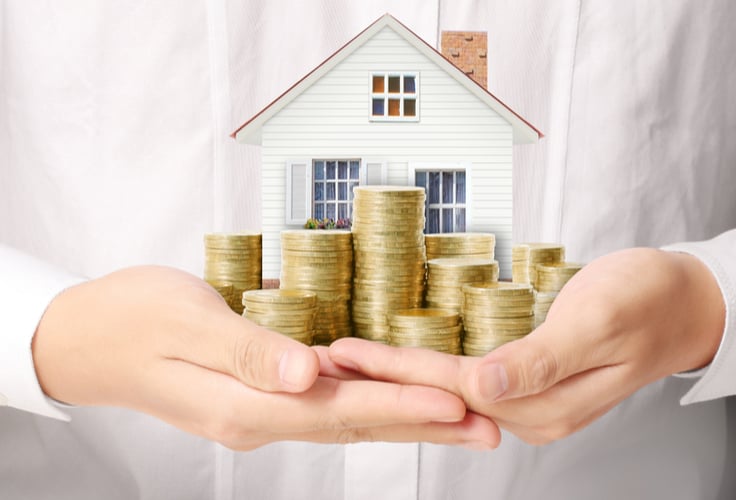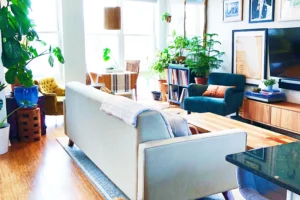In today’s competitive real estate market, increasing the value of your home is a smart move for anyone looking to sell or simply improve their living space. Making simple changes to your home can make it look better and increase its value without spending a lot of money. This article discusses eight simple yet effective ways to make your home more valuable so that it stands out and gives you a good return on your investment.
1. New paint makes everything look better
A new coat of paint is one of the cheapest ways to make your home look better. Neutral colors make a room seem larger, brighter, and friendlier, which appeals to a wider audience. Painting is a simple DIY job that can have a big impact on your home’s value, whether you want to improve the curb appeal of your home or give your interior walls a new look.
2. Replace lamps
The mood of a room can be changed by updating the lighting to make it feel more modern and warmer. You may want to replace your old lamps with new ones that look more modern or use less energy, such as LED lamps. The right lighting can bring out the best in your home’s character and make rooms feel larger and more expensive.
3. Make your outdoor space better
The pandemic has made outdoor living spaces even more important to homeowners. Adding a deck or patio, planting plants, or even creating a functional garden can make your outdoor space look better and more useful. These improvements not only provide more living space but also make your home more attractive and valuable.
4. Change the bathroom and kitchen
Bathrooms and kitchens are what sell the house. It doesn’t have to be a complete overhaul to make a difference; small changes can add a lot of value. If you want to update the look without a complete remodel, you can replace old faucets, update the cabinet hardware, or add a new backsplash. Buyers will look at these rooms carefully before making a decision, and adding a contemporary touch can help you seal the deal.
5. Make sure your home uses less energy
Making your home more energy efficient is not only better for the environment, but also more attractive for buyers who want to save money on their energy bills. Simple changes like closing doors and windows, adding insulation, or setting a smart thermostat can have a big impact on a home’s energy consumption and make it more attractive to buyers who care about the environment.
6. Look at the floor
Floors have a major impact on the overall appearance of your home. If your hardwood floors or carpets are worn or scratched, you may need to clean them. By having your carpet cleaned or your wood floors refinished by a professional, you can give a room a whole new look. If you need to replace something, choose a durable and attractive material such as plywood or engineered hardwood, which has a high-quality appearance but also has a hefty price tag.
7. Eliminate waste and make the most of space
Clutter can make your home look bad and make it harder to use. You can make your home seem bigger and better by clearing out clutter, cleaning, and even adding storage space. Built-in shelves or closet organizers can help you make the most of your space and provide potential buyers with a clean, open space.
8. Smart Home Technology
Adding smart home technology can increase the value of your home by providing additional protection and convenience features that tech-savvy buyers desire. Adding a smart lock, thermostat, or home security system is an easy and inexpensive way to give your home a new look and make it more attractive to a wide range of people.
Conclusion
Increasing the value of your home does not require major repairs or a large investment. By focusing on key areas and making smart upgrades, you can make your home more attractive and increase its market value. If you want to increase the value of your home, these eight simple changes are a good place to start. Whether you’re looking to sell quickly or just want to make your home a better place to live, these improvements can give you a great return on your money and make your home a better place to live.
FAQs
1. How much should I spend on improving my home before selling it?
It is important to weigh the cost of the changes against the increase in home value they may bring. Look for changes that don’t cost much and give you a good return on your investment. Talking to a real estate agent can help you better understand what changes will work best for your market.
2. Will paint have a big impact on my home’s value?
Yes, paint is one of the easiest and cheapest ways to give your home a new look. Neutral colors can help people imagine themselves living in the place, which can help your home attract more people.
3. Are energy-saving changes worth the money?
Buyers are often looking for homes that will save them money on their energy bills over time. Upgrades that make the home more energy efficient are therefore very attractive to them. Simple changes, such as better insulation or more energy-efficient windows, can also make your home more comfortable and use less energy.
4. How important is exterior square footage to your home’s value?
There is a growing interest in outdoor spaces, especially as recent events around the world have shown how important it is to have a personal outdoor retreat. Well-designed and well-maintained outdoor spaces can make your home look better and add value.
5. Can smart home technology make a home more valuable?
Smart home technology can help you sell your home faster, especially for young, tech-savvy people who care about security and comfort. They may not make your home more valuable, but they can help your home stand out in a crowded market.
6. Should I buy new flooring before selling my house?
If your floors are very worn or outdated, buying new ones can make your home look better and increase its value. Simple changes, such as deep cleaning or refinishing existing floors, can make a big difference without having to buy a new floor.
7. How do I determine what changes to make?
Focus on making changes that will make your home look better and increase its value without spending a lot of money. Prioritize changes that address functional issues or severely outdated areas, and consider what buyers in your area may want.



